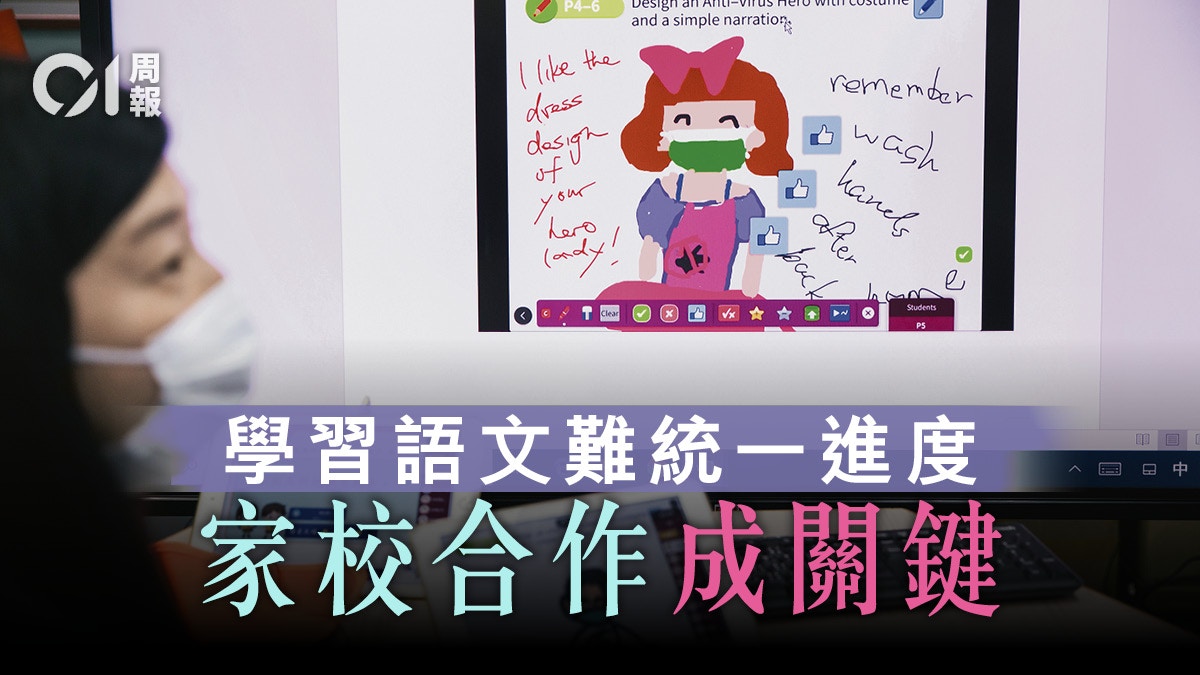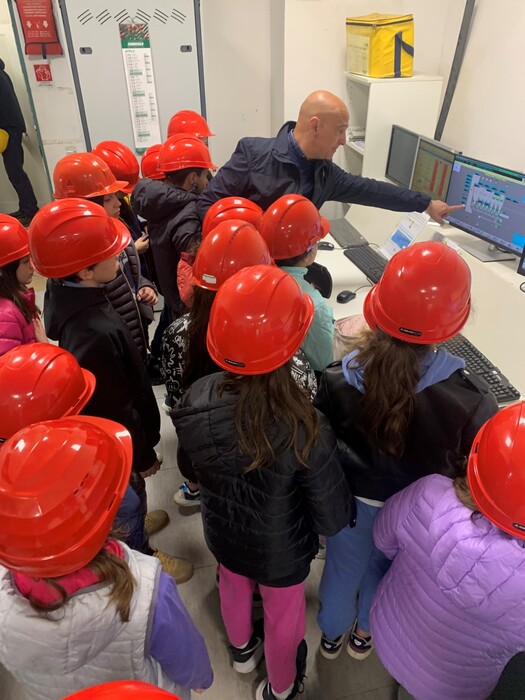weekly
Author: Contributing writer
2020-04-04 12:00
Last update date: 2020-04-04 12:00After the online class started, Awen, who was studying in the second grade of the Yunquan School of the Hong Kong Taoist Association, turned on his computer at home and opened a pre-recorded short video of Chinese subjects taught by the teacher. Hearing that the teacher was teaching the content of the text, questions kept coming to my mind: This Chinese How to solve it? How do you combine this sentence, don't you understand?
A Wenyu looked more and more discouraged, but his parents did not understand Chinese characters, and usually spoke Udu (a common language in India and Pakistan), and his ability to hear and listen was only able to cope with simple daily life. He didn't know who to ask. Since his homework was a multiple-choice question, he seemed to understand the exercises. After a week, he found that there was more and more classroom content that he didn't understand, and he didn't want to do any homework online.
Written by: Ouyang Cuishi
It is never easy for non-Chinese speaking students to learn Chinese well. In schools, there are many different teaching methods, such as class division according to language ability, division of several groups in the class, and learning in the form of interactive discussions to improve classroom participation, and The group uses a "strong and weak" approach to allow students with different abilities in the group to communicate with each other, but these teaching methods for learning differences are difficult to achieve in the online classroom. The return of non-Chinese speaking students to their homes, like fighting alone, has reduced their motivation to learn.
It is never easy for non-Chinese speaking students to learn Chinese well. (Profile picture / Photo by Huang Shuhui)
Promoting e-learning in mainstream schools generally faces problems such as the resource gap that is difficult for middle-class and grassroots students to bridge, and the pace of information technology development in schools. However, in schools with different student composition, they are faced with the dilemma of learning differences. E-learning has another layer of difficulty.
The Yunquan School of the Hong Kong Taoist Association was once a designated school for ethnic minorities. The number of non-Chinese speaking students in the school is about 80%. The school has long promoted e-learning and has become a centre of excellence in IT teaching in the Education Bureau. To help students learn Chinese well, the school uses RainbowOne's language teaching platform and promotes BYOD (Bring Your Own Device, one person, one machine). Students usually use different e-learning platforms in the classroom, and there is no big problem in operating the platform interface. However, simply using a more one-way video teaching, learning effectiveness is very different from classroom teaching, schools began to think about how to introduce real-time teaching mode, complementation is insufficient.
"E-learning has no alternatives on this serious outbreak day, but is it the most ideal? I think it needs to be complementary. It is also necessary for real-time or real-life classes. Because of the difference in learning, high-ability students have no problem, but the ability is more Weak classmates need to follow up. After they know what they do n’t understand, they have to deal with it individually. ”Principal Liu Huizhen pointed out that she had expected at the beginning of the suspension that she would not resume classes in a short time.“ We have to make the worst plan. The best preparation. "
The earliest practice was to distribute worksheets in the form of e-learning. After a week or two, they began to upload new teaching topics. Because of the long suspension time, they could not always review the old topics. "Of course, the advantage of e-learning is that you can take classes remotely, but students have learning differences. You can't rely on video or distance to make all students master all the learning content. We also have close contact with parents."
Of course, the advantage of e-learning is that you can take classes from a distance, but students have learning differences. You can't rely on video or distance to make all students master all the learning content. (Photo by Huang Baoying)
The school continued to examine how many students participated in online learning in the past few weeks. They found that the students in the lower grades handled well, about 50 to 60%. The students in the upper grades, especially some classes, have more students returning to their countries, including India, Pakistan, Nepal, etc., their homework through e-learning is not positive. Because students return to the countryside, they may not have relevant learning equipment and Wi-Fi that can handle enough traffic. The number of students returning to their own country is quite large. At first, there were 30 to 40 students in a week. Later, it has risen to about 50 students.
"We hope that we can try other methods to see if the teacher looks like, the students will be more excited, and the learning motivation will be higher." She believes that the participation of senior students depends on the support of parents. "Students with weaker ability at home, including technical and homework support, may not be enough, because non-Chinese speaking students teach in Chinese and English, and some parents have limited English."
They have studied the data of the response rate of homework and found that the response rate of doing Chinese homework is not so ideal. Even the elite class has only single digits. It just reflects that their families are difficult to support Chinese homework, so the gap is large. "It is very important for non-Chinese speaking students to learn Chinese well, especially when they study in university and live in Hong Kong in the future. Their progress and interest in learning Chinese are different. We have to discuss with colleagues in the Chinese Department how to make up for their learning progress. This is also a headache. The place."
The school ’s current online learning model is similar to other schools ’practices, mainly recording short videos of about five to six minutes, and then let students use Google Form to do their homework. English, mathematics, and common sense) are taught in all four disciplines, and I hope to use the "small steps" method to understand how much students learn every day. If there are still deficiencies, the follow-up short video will be recorded that day, and immediately explain the places that many students fail to grasp.
Principal Liu Huizhen of the Yunquan School of the Hong Kong Taoist Association and colleagues have been thinking about how to make students learn better. (Photo by Huang Baoying)
The school hopes to improve the response rate of classmates' homework online, and is still testing whether other parties can make students easier to master and encourage students to do their homework. On the day of the visit, they were teaching real-time for the first time with sixth grade students, following up on the mathematics subject taught by the sound navigation slides during the suspension period—rate, about 30 students were online at the same time on the day, and even returned to India and Pakistan. Students are connected.
Slow progress of teacher-student interaction
The teacher asks questions in real time. Students can press the "Raise Hand" button on the Zoom platform. The teacher then turns on his microphone so that classmates can hear him speak. The rules of the classroom have to be re-established, and the interactive mode takes time to become familiar. They hope that they can improve their learning effectiveness in the future. The teaching process of Zoom will be automatically saved at the end of the video conference, so that students who cannot connect in real time can revisit the video later.
School Development Director Pang Jialiang said that before considering pre-videos or real-time teaching, it is difficult to specify the time of the class. Many ethnic minority families generally have many siblings. At home, there may be a brother who is in middle school to use live, so in the end we chose to record film. "Now add auxiliary real-time learning to see if they have any problems, and then tell us." Pang Jialiang said.
The school can cooperate with so many e-learning, also because other teaching platforms have been used in daily classrooms, and students are familiar with the relevant interface before they can master it in a short time. Other schools that do not have application-related teaching platforms will spend more time familiarizing students and require parental assistance. They have already used RainbowOne software in the Chinese language department. Words can be automatically pronounced, and they have the functions of recording and taking pictures. Because there are many interactive elements, they can know whether the students really master the knowledge.
For the first time, the school uses synchronized real-time classes. Students adapt to the new classroom rules. First press the "Raise Hand" button, and then the teacher will unmute. (Photo by Huang Baoying)
Language subjects need to read the text aloud. The teacher will put the text into the software. After listening to the reading, students can recite and record by themselves. "Sometimes when I hear someone behind him teaching him, it should be his sister who is in middle school, and I will learn more about his study at home. If he has any inaccurate reading, I can correct it immediately. They are very Like to give "like", if you give them stars, they know that the teacher has listened, and encourage him to record better next time. They can also hear what they read and give them stars. This is a lower grade text, Let ’s read a few paragraphs or read aloud sentence by sentence. ”Mr. Shen Simin, the director of the Chinese Department explained.
In order to make the students remember the words, they also use the game software of "Si Shu Wen Wen", which allows them to hear the teacher reading sentences on the platform during the suspension, just like the usual silent book. "He wrote it on the software himself, or gave it to us after he finished writing it. The teacher corrected it. He opened it to see if he had written it correctly. We encourage students to press the answer and circle their mistakes. Be a little teacher. "Before the class was closed, they had used this learning platform, mainly to assist teaching, and there will be extended exercises after class.
Even if the school makes good use of the teaching platform, teachers and students do not have to spend too much time learning how to operate during the suspension, but the teacher bluntly said that compared with the progress and effectiveness of the usual class, the learning is indeed slower. The school also expects to extend the summer vacation until the end of July.
Pang Jialiang said: "We teach slowly, and it's not always easy to see if the children learn it. Therefore, we teach a small part every day to see if they master it, and then adjust it later. Compared to normal school, the whole Progress is slow. "
The development of suitable e-learning courses in response to students 'needs and learning differences is the focus of academics' need to reflect after this epidemic. (Photo by Huang Baoying)
Promoting the journey of e-learning, because of the school situation and the degree of students, the results are mixed. There are always irreplaceable benefits of face-to-face teaching. How to respond to the needs and learning differences of students, combine e-teaching and daily classrooms, and flexibly change the mode of teaching and learning. It is the focus that the academic community needs to reflect upon after experiencing this epidemic.
related articles:
[Closed without stopping. A] How to effectively grow up in the epidemic situation of new pneumonia and learn at home
[Closed without stopping. Two] There is no doubt about the progress of learning in the class "No King Control"
The above excerpt is from the 207th issue of "Hong Kong 01" Weekly News (March 30, 2020) "Online Learning Difficulties and Obstacles to Non-Chinese Language Students".
More weekly articles: 【01 Weekly News Page】
"Hong Kong 01" Weekly is available at major newsstands, OK convenience stores and Vango convenience stores. You can also subscribe to the weekly report here to read more in-depth reports.
Non-Chinese Speaking Students E-learning New Coronary Pneumonia In-Depth Report





/cloudfront-eu-central-1.images.arcpublishing.com/prisa/6ENC2Q6CD5AYNEZWKGRS3K6WSA.jpg)



